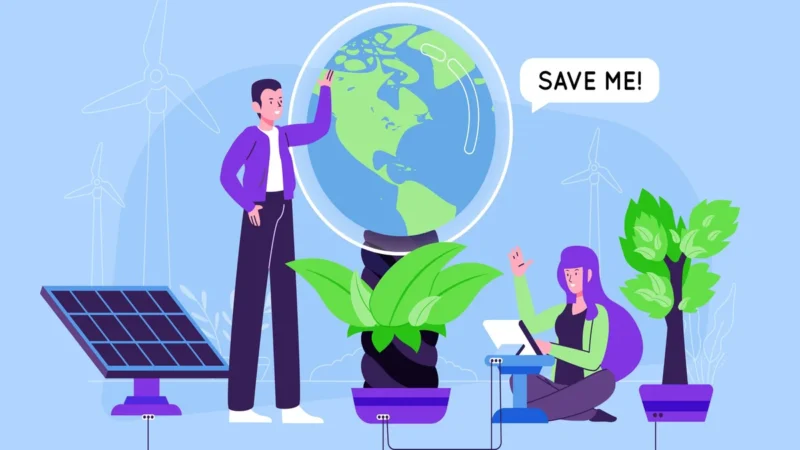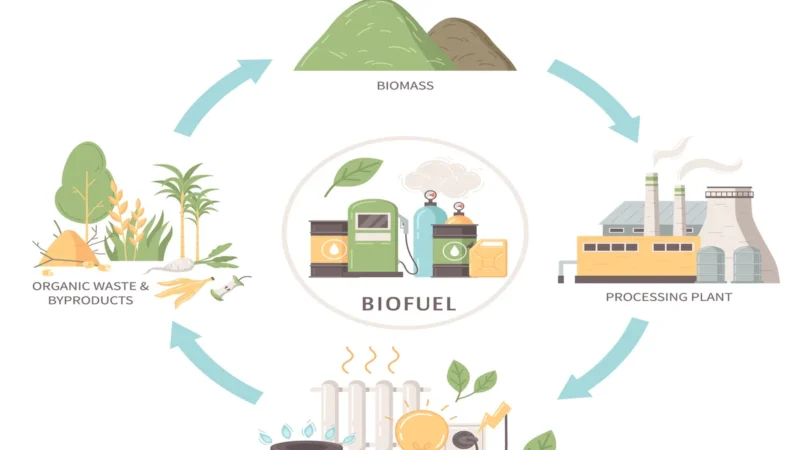All You Need To Know About The Top 5 Renewable Energy Innovations

The global drive towards sustainability has sparked remarkable advancements in renewable energy technologies. As the world grapples with the urgent need to reduce carbon emissions and combat climate change, innovative solutions are emerging to harness cleaner, more efficient energy sources. From solar paint to wind trees, these top five innovations are paving the way for a more sustainable future.
1. Solar Paint
Imagine a world where ordinary surfaces can generate electricity from sunlight. This vision is becoming a reality with the advent of solar paint. Unlike traditional solar panels, which require dedicated installations, solar paint can be applied to various surfaces, transforming them into solar energy harvesters. These paints contain photovoltaic compounds that capture sunlight and convert it into electrical energy, offering a versatile and aesthetically pleasing approach to solar power generation. Researchers are continuously refining these paints to enhance efficiency and durability, opening doors to widespread adoption in residential and commercial settings.
2. Wind Trees
Innovators are reimagining traditional wind turbines with a touch of artistry and efficiency. Wind trees, resembling artistic sculptures more than industrial machinery, are revolutionizing wind energy generation. These tree-like structures feature multiple vertical blades that capture wind from any direction, unlike conventional turbines that rely on specific wind angles. Their compact design allows placement in urban environments, offering a renewable energy solution where space is limited. Moreover, wind trees produce minimal noise and blend seamlessly into landscapes, presenting a harmonious coexistence of function and aesthetics.
3. Ocean Energy Harvesting
The vast expanses of the world’s oceans hold immense potential for renewable energy. Various technologies are harnessing the power of tides, waves, and currents to generate electricity. Tidal energy systems, utilizing the ebb and flow of tides, produce consistent and predictable power. Wave energy converters capture the kinetic energy of ocean waves, while ocean current turbines tap into the continuous flow of underwater currents. These innovations not only diversify our renewable energy sources but also capitalize on the reliability of ocean movements, offering a constant and eco-friendly power supply.
4. Biodegradable Solar Panels
Traditional solar panels, while effective in generating clean energy, pose challenges in disposal due to their non-biodegradable components. However, recent breakthroughs have led to the development of biodegradable solar panels. These eco-friendly alternatives incorporate organic materials that decompose naturally, reducing environmental impact and addressing concerns about solar panel waste. Integrating sustainability into their life cycle, these panels mark a significant stride towards a circular economy in the renewable energy sector.
5. Solar-Powered Desalination
Water scarcity remains a pressing global issue, and innovators are merging solar energy with desalination technologies to tackle this challenge sustainably. Solar-powered desalination systems utilize solar heat to purify seawater, making it suitable for consumption and agricultural use. These systems offer an environmentally friendly solution to freshwater shortages, particularly in regions where access to clean water is limited. By leveraging the abundance of sunlight in coastal areas, solar-powered desalination presents a promising avenue for addressing water scarcity while reducing reliance on fossil fuels.
The future of renewable energy is vibrant and diverse, driven by continuous innovation and a shared commitment to sustainability. These five groundbreaking technologies exemplify the evolving landscape of clean energy, offering promising solutions to power a more sustainable world. As research and development propel these innovations forward, their integration into mainstream energy systems holds the key to a greener, more resilient future for generations to come.
FAQs:
Renewable energy is derived from naturally replenishing sources that are continuously available and sustainable over time. These sources include sunlight (solar), wind, water (hydroelectric and tidal), geothermal heat, and biomass. Unlike fossil fuels, renewable energy sources are abundant, clean, and have minimal environmental impact.
Solar panels contain photovoltaic cells that convert sunlight into electricity. When sunlight hits the cells, it excites electrons, creating an electric current. This direct current (DC) is then converted into alternating current (AC) by an inverter, making it usable for powering homes, businesses, and various electrical devices.
Wind energy is renewable, abundant, and emits no greenhouse gases or air pollutants during operation. It reduces reliance on fossil fuels, contributes to energy independence, and generates economic opportunities, such as job creation and investment in local communities.
Renewable energy sources can be highly reliable. Advances in technology have improved their consistency and efficiency. For instance, wind and solar forecasting systems help predict energy production, while advancements in energy storage solutions, such as batteries, enhance reliability by storing excess energy for use during low production periods.
Challenges include intermittency (variations in energy production due to weather changes), energy storage limitations, initial infrastructure costs, and regulatory hurdles. However, ongoing research and innovation are addressing these challenges, making renewable energy more accessible and cost-effective.


